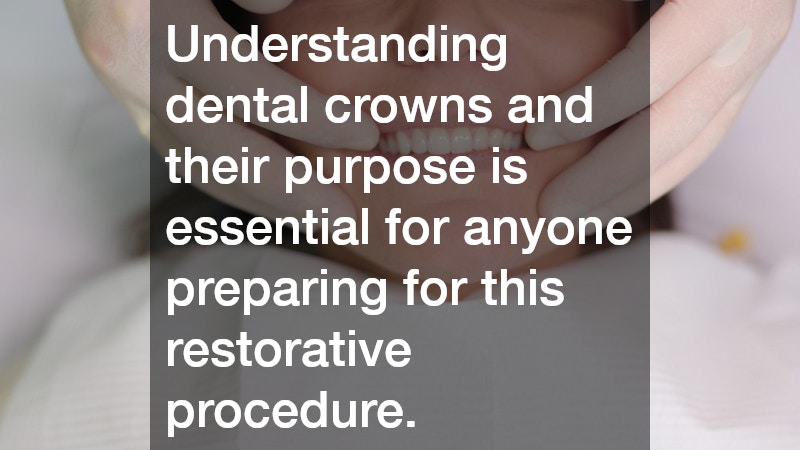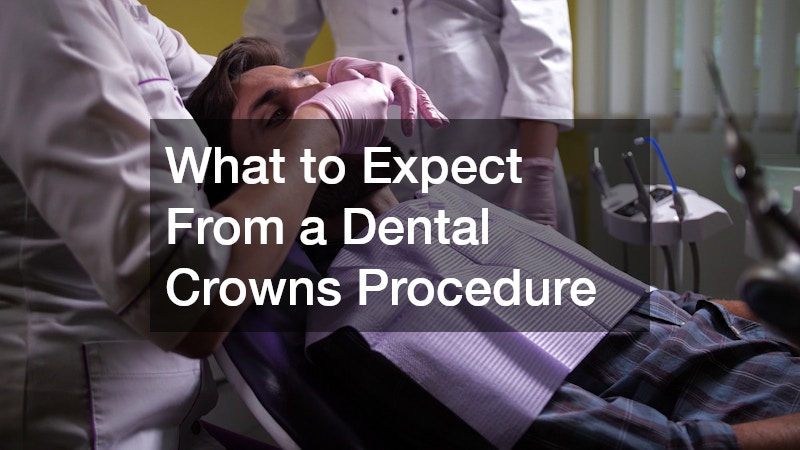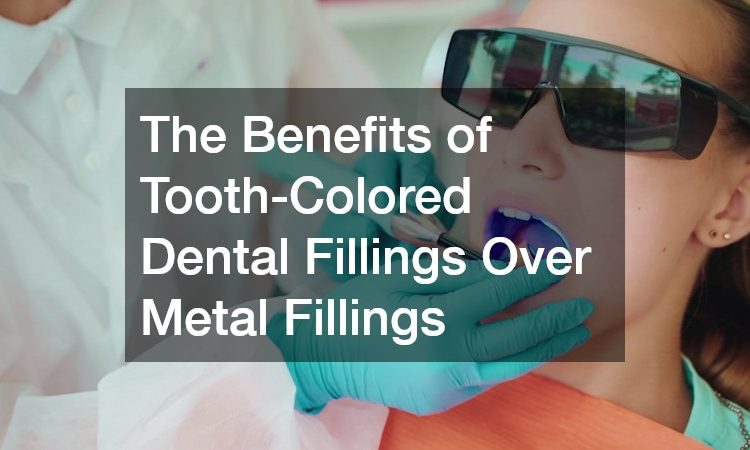Understanding dental crowns and their purpose is essential for anyone preparing for this restorative procedure. Crowns are a common solution for strengthening and protecting damaged teeth while improving both function and appearance.
What Are Dental Crowns and Why Are They Needed?
A dental crown is a custom-made cap placed over a damaged or weakened tooth to restore its shape, strength, and appearance. Crowns fully encase the visible portion of the tooth above the gum line, providing both protection and cosmetic enhancement.
Common Reasons for Dental Crowns
Crowns are used for several reasons: to restore teeth with large cavities or cracks, strengthen a tooth after a root canal, improve the look of discolored or misshapen teeth, or anchor dental bridges. They’re also placed over dental implants as the final restoration.
Types of Dental Crowns Available
There are several types of dental crowns, each suited to different needs:
-
Porcelain or ceramic crowns blend naturally with surrounding teeth, making them ideal for front teeth.
-
Metal crowns (gold or alloy) are highly durable and suited for molars.
-
Porcelain-fused-to-metal (PFM) crowns offer both strength and aesthetics.
-
Zirconia crowns provide exceptional durability and a lifelike appearance.
Benefits of Dental Crowns
Crowns restore function and appearance, protect weakened teeth from further damage, and enhance overall oral health. They also improve bite alignment, prevent tooth loss, and can last for many years with proper care.
How to Prepare for a Dental Crown Procedure
Your dentist begins with a thorough examination, often including X-rays or digital scans. This evaluation determines whether a crown is the best option or if other treatments are needed first.
Pre-Procedure Instructions
Before the procedure, you may be advised to avoid certain medications, eat a light meal, and practice good oral hygiene. If sedation or anesthesia is planned, arrange for transportation after the appointment.
Understanding the Procedure Timeline
Most crown procedures require two visits. The first involves tooth preparation and temporary crown placement, while the second — typically one to two weeks later — involves fitting the permanent crown. Some dental offices offer same-day crowns using CAD/CAM technology.
Addressing Dental Anxiety
If you experience dental anxiety, discuss sedation options with your dentist. Local anesthesia, nitrous oxide, or oral sedatives can help make the experience more comfortable.
Financial Considerations and Insurance
The cost of dental crowns depends on materials, complexity, and location. Many dental insurance plans cover part of the cost when the crown is medically necessary.
What to Expect During the Dental Crown Procedure
First, the dentist numbs the area and reshapes the tooth by removing a small portion of enamel. Next, impressions or digital scans are taken to create a custom crown. A temporary crown is placed while the permanent one is being fabricated. During the final visit, the temporary crown is removed, and the permanent crown is cemented securely into place.
Pain and Discomfort Management
Mild sensitivity or soreness after tooth preparation is common and can be managed with over-the-counter pain relievers. Any discomfort typically subsides within a few days.
How to Care for Dental Crowns After the Procedure
Avoid eating until the numbness wears off. Refrain from chewing hard foods for at least 24 hours while the cement sets fully.
Long-Term Maintenance Tips
Brush twice daily using a soft-bristled toothbrush and non-abrasive toothpaste. Floss carefully around the crown to prevent plaque buildup and gum irritation.
Handling Discomfort and Complications
Sensitivity to temperature may occur briefly after placement. Persistent pain, loose crowns, or bite discomfort should be reported to your dentist promptly.
Diet and Lifestyle Adjustments
Limit sticky, hard, or chewy foods that could damage the crown. Avoid habits like nail-biting, grinding, or opening packages with your teeth.
When to Contact Your Dentist
Contact your dentist if the crown feels loose, cracks, or if you experience swelling or prolonged pain. Early attention prevents further complications.
What Are the Potential Risks and Complications?
Temporary sensitivity or gum irritation can occur. Rarely, crowns may chip, loosen, or cause discomfort due to improper fit.
Signs of Crown Failure
If you notice pain when biting, visible cracks, or movement, it may indicate cement breakdown or underlying decay. Prompt evaluation helps prevent tooth damage.
Managing Allergic Reactions
Allergic reactions to materials like metal alloys are rare but possible. Inform your dentist of any sensitivities before treatment.
Understanding the Lifespan of a Crown
With good oral hygiene and regular dental checkups, crowns can last 10 to 15 years or longer. The lifespan depends on material type and daily care habits.
When to Seek Professional Help
If your crown becomes loose or damaged, avoid trying to fix it yourself. Contact your dentist immediately for professional repair or replacement.
Restoring Confidence and Function with Dental Crowns
A dental crown procedure is one of the most reliable ways to restore strength, functionality, and beauty to damaged teeth. By understanding each step—from preparation to long-term care—patients can approach the process with confidence. With proper maintenance and regular dental visits, crowns can provide lasting protection and a renewed sense of comfort and confidence in your smile.




